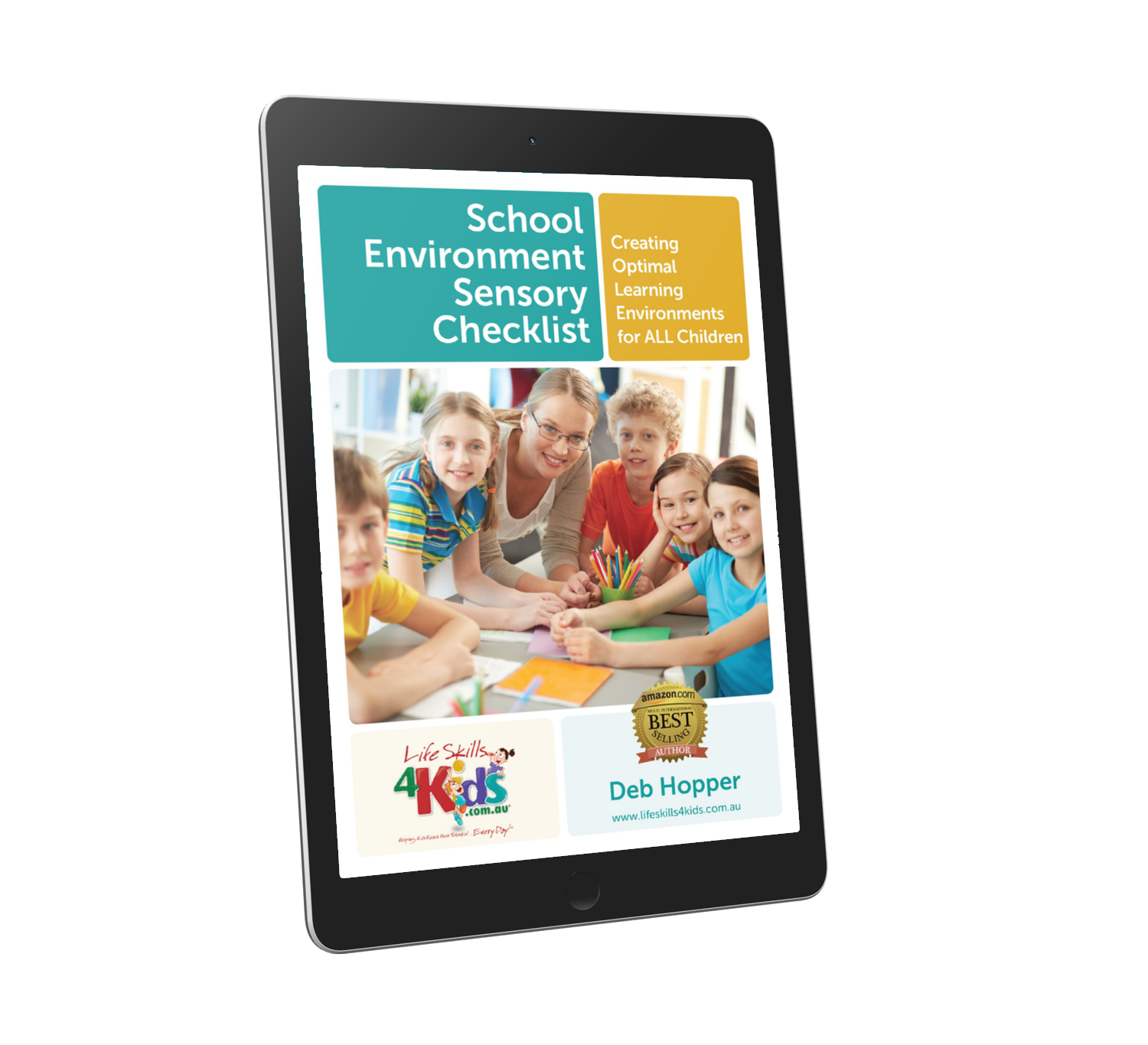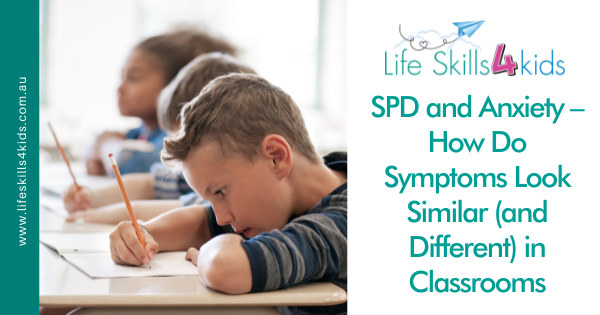A 2009 study found that 16.5% of 7-11 year olds have sensory issues that make it hard to function and learn effectively in a school environment. Sensory issues are often found in kids with ADHD, autism and other developmental delays, but they can also be present in kids who have no other diagnosis at all.
It is important therefore, as a teacher, to be able to pick up kids who may have SPD and anxiety in classrooms, so that you can work with parents and other professionals to help that young person access their right to education.
Anxiety in the classroom
How can you identify a pupil with anxiety in the classroom?
Sometimes it can be easy to identify — like when a child is feeling nervous before they perform in the school play or before an exam. At other times, anxiety in the classroom can look like something completely different, eg, an upset stomach, disruptive or angry behaviour, ADHD or truancy.
There is an interesting article on childmind.org about anxiety in the classroom. In it, they discuss the different types of anxiety that pupils can suffer from in the classroom.
Children can struggle with:
- Separation anxiety: When children are worried about being separated from caregivers. These kids can have a hard time at school drop-offs and throughout the day.
- Social anxiety: When children are excessively self-conscious, making it difficult for them to participate in class and socialize with peers.
- Selective mutism: When children have a hard time speaking in some settings, like at school around the teacher.
- Generalized anxiety: When children worry about a wide variety of everyday things. Kids with generalized anxiety often worry particularly about school performance and can struggle with perfectionism.
- Obsessive-compulsive disorder: When children’s minds are filled with unwanted and stressful thoughts. Kids with OCD try to alleviate their anxiety by performing compulsive rituals like counting or washing their hands.
- Specific phobias: When children have an excessive and irrational fear of particular things, like being afraid of animals or storms.
As a teacher, it can be difficult to work out that the way a child is acting could be caused by anxiety. In general, if you notice any pupil who is experiencing ‘brain freeze’ where they are unable to comply with your requests – this could well be a sign that they are experiencing anxiety. It is definitely worth keeping this in mind when you are working with your pupils.
SPD in the classrom
What are you looking for to indicate a child has SPD?
Not every pupil with anxiety has SPD and not every child with SPD has anxiety, but a high percentage do.
SPD in kids can manifest itself in many forms, just in the way that people are unique, so each child’s specific sensory issues will be individual. Pupils with Sensory Processing Disorder may express sensations either, or in a combination of, hypersensitivity (sensory avoidance) or hyposensitivity (sensory seeker).
Have a look at our article on identifying SPD in class, here you will find useful information for identifying whether a pupil may have SPD and within that, whether they may be hyper or hypo-sensitive to their environment.
At LifeSkills4Kids we are passionate about helping teachers to identify SPD and anxiety in classrooms and then provide strategies and ideas that work. (See below in the ‘how you can help’ section of this article).
SPD and Anxiety: Similarities
Check out my article on similarities and differences between SPD and anxiety.
In this article, we highlight the similarities between the symptoms of SPD and anxiety, which can include:
- shaking, trembling, rigid posture
- dilated pupils
- stomach cramps, vomiting, diarrhoea
- excessive sweating
- disorientation, dizziness
- poor balance and coordination
- flushed face
- racing thoughts
- sleep problems
- shortness of breath
- heart palpitations
SPD and Anxiety: Differences
So far, it seems quite difficult to work out whether a child has SPD or anxiety, as they both have very similar signs and symptoms.
The main difference between SPD anxiety and other types of anxiety is that with SPD, it doesn’t matter how many times you work through the trigger for this anxiety, your child will still not cope with it and will continue to display the same symptoms.
Kids with SPD do not have the ability to habituate (become accustomed to) new information. Kids with SPD like routine and predictability and sensory stimuli is often neither of those things. A lot of sensory stimuli is random and unusual and anxiety is often the result of this.
So, if you have a pupil who is experiencing anxiety, you can find strategies to work through the trigger and eventually enable that pupil to deal with the anxiety-producing scenario; if you have a pupil who has SPD, you will need to find strategies that allow that young person to avoid the trigger for their SPD and find alternative ways to deal with their environment.
How you can help
Ok, so we’ve looked at ways to identify the symptoms of SPD and anxiety in classrooms, but once you’ve done this, how can you help your pupils?
It is one thing to know that one of your pupils has SPD or anxiety and another thing entirely in working out strategies to help them to grow and thrive within the educational environment.
Our first recommendation would be to get help from an Occupational Therapist if you are lucky enough to have one attached to your school. If this isn’t an option, we have plenty of information and tips available here. Have a look at the following articles:
- Identifying kids with sensory issues in class
- Identifying sensory issues that impact leaning in the classroom
- There is also free training based around the above article, access it here
- Your classroom sensory environment
Finally, check out our base of teacher tools. As occupational therapists with many years of experience we are here to help!
Written By Deb Hopper, Occupational Therapist
School Environment Sensory Checklist (eBook)
Do you have children in your class who struggle with autism, learning difficulties or reduced concentration? Then the School Environment Sensory Checklist (SESC) is your entry into transforming your classroom!
Quickly and easily evaluate your classroom from a sensory perspective to enhance learning needs of all children, including children with autism and learning difficulties.
Have less distracted children who listen for longer and enjoy times of focused learning and easier transitions. Whether you are a newly qualified teacher or have many years experience, the School Environment Sensory Checklist (SESC) will refresh your vision for your classroom!


